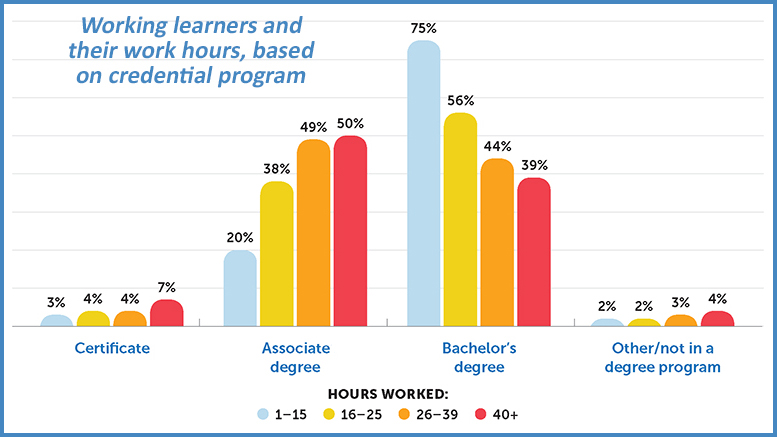Nearly 70 percent of all college students work — but those work experiences vary greatly between low- and higher-income students, according to a new study.
Higher-income students tend to work because they want related career experiences, and they have access to better work opportunities, such as internships and assistantships, according to the study from the Georgetown University Center on Education and the Workforce.
Low-income students work mainly to make ends meet, and usually in jobs not related to their desired career choice. They are more likely than higher-income students to work in food services, sales and administrative support positions. While these jobs offer basic skills development in teamwork and such, they often do not provide technical or broader skills needed for an entry-level position in their selected careers, the study says.
Low-income working students also are more likely to enroll in certificate programs and attend two-year public or for-profit colleges than higher-income working students, the study says. Students in associate-degree programs are more likely to work full time than students enrolled in bachelor’s-degree programs.
Tipping the scales
Low-income students tend to work longer hours than higher-income students. There’s a threshold where working too many hours — more than 15 hours a week — starts to affect school performance, the center says. Sixty-five percent of higher-income working learners who work less than 15 hours a week earn grades of “B” or better. Meanwhile, nearly 60 percent of low-income working learners who work more than 15 hours a week earn on average grades of “C” or lower.
Among students working the fewest hours per week (one to 15), three-quarters are enrolled in baccalaureate programs, 20 percent in associate-degree programs and 3 percent in certificate programs. As the work hours increase, the proportion of students enrolled in bachelor’s-degree programs decreases, while the share in associate-degree and certificate programs increases. Among students working full time (40 hours a week or more), half are in associate-degree programs, 39 percent are in baccalaureate programs and 7 percent are in certificate programs.
Better connections and earlier exposure
The center challenges colleges to help students connect with more robust, meaningful work experiences. For example, colleges can use work-study programs to offer students work experiences in their chosen field, rather than simply providing a job.
“Colleges may wish to consider how resources spent on work-study jobs might be redeployed to place more students in jobs that help them meet their professional objectives, rather than using their work-study placements as a convenient way to fill low-skill, low-paying campus jobs in the dining hall or gym,” the center says in its report. “Low-income students also need more organized systems and assistance to help them access the mentors and networking contacts needed to land better jobs that can provide experience more directly related to their desired careers.”
The center also called on lawmakers to develop policies that strengthen ties between K-12 and career exploration and training. Career and technical education has shifted almost entirely from secondary to postsecondary education, which denies high school students the chance to explore those careers, it notes.
In addition, students in as early as middle school would benefit from financial education that would include information on grants and loans.

